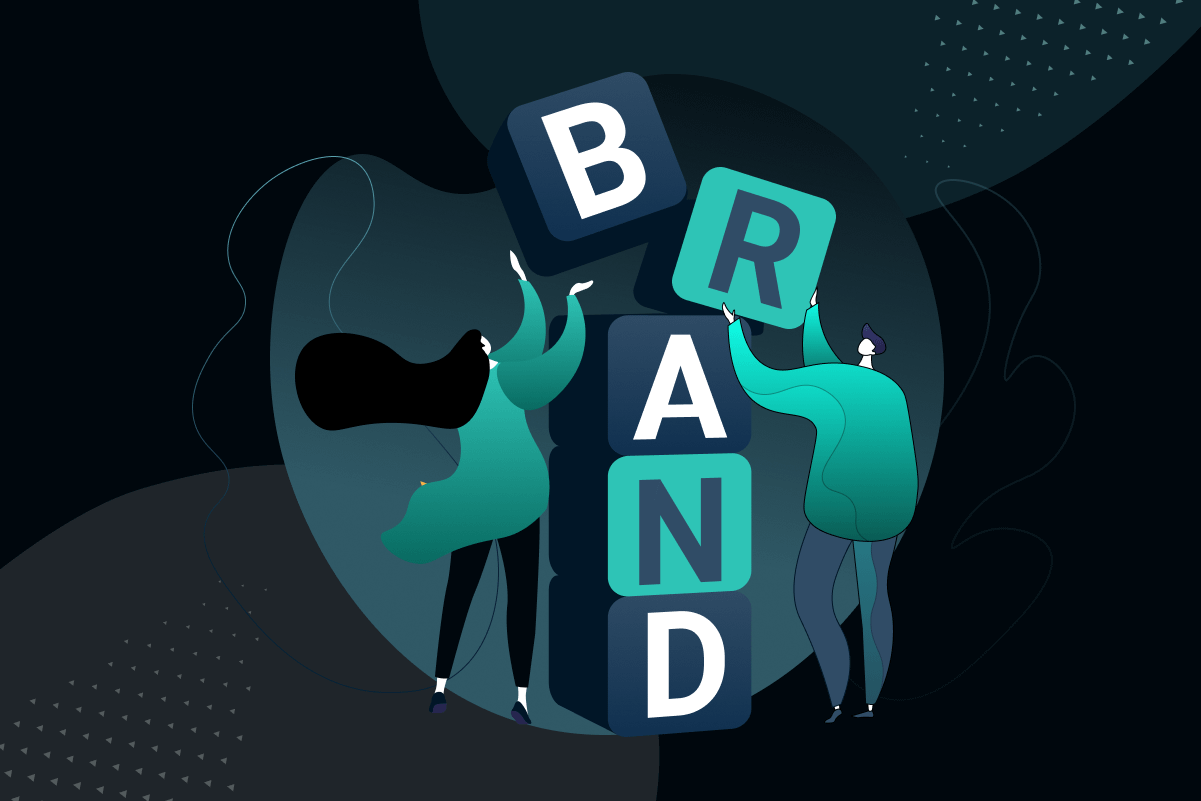Visual storytelling is one of the most important components of a brand’s identity. The one aspect that keeps brands on their toes is brand evolution. Brands should follow an exciting path of adaptation, growth, and relevance in a constantly evolving market.
For small businesses, the ability to evolve is crucial for growth, longevity, and dominance in the market. What is effective today might not be tomorrow, as market dynamics, consumer needs, and preferences constantly change.
To keep your business relevant to your target audience, smooth and consistent evolution of your brand is not just critical but essential. This might involve updating your logo, slogan, or product line or aligning your brand with contemporary trends.
Numerous brands have undergone significant transformations over time. Big names like Coca-Cola, McDonald’s, and Pepsi have all revamped themselves in recent years to stay in tune with their audiences.
What is Brand Evolution?
Brand evolution is the process through which a brand develops, adapting to changes in market conditions, customer preferences, and other factors that influence its image and reputation. It involves continuously managing a brand to ensure it stays relevant and connects with its target audience.
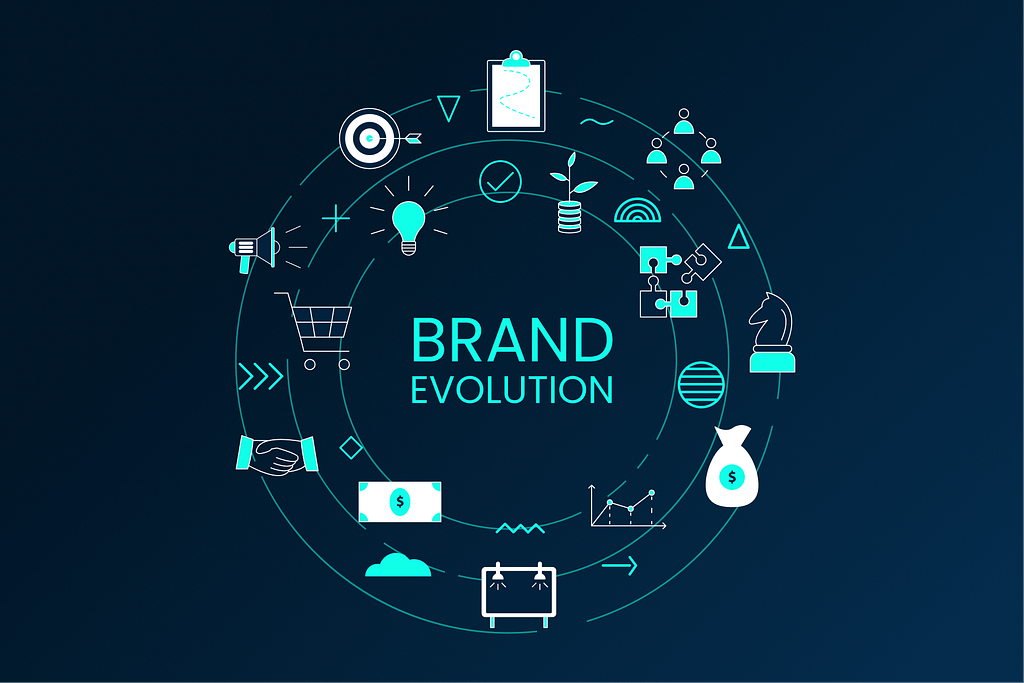
The evolution of a brand can manifest in various ways. It might involve subtle tweaks to its visual identity or more significant strategic shifts in the company’s messaging, product offerings, or marketing strategies.
Some brands may experience gradual evolution over time, while others might undergo swift transformations in response to major market shifts or external influences.
The evolution of a brand is not a sudden process. It unfolds gradually, beginning with minor changes and expanding over time. These adjustments can significantly influence how your audience perceives your brand and purchasing decisions.
In essence, brand evolution ensures that your brand stays current with the latest industry trends and market conditions.
Why is Brand Essential?
Brand evolution is an essential strategy for companies to stay aligned with changing trends and consumer preferences, as it involves updating elements like a company’s logo, messaging, and more. It’s distinct from a complete rebrand, offering a subtler transformation. Examples of brand evolution can be seen in companies like Pepsi, Vogue, and Dropbox, which have made changes such as updating fonts, tweaking color schemes, and revamping website layouts.
When a company undergoes brand evolution, it takes incremental steps to rejuvenate its offerings and maintain its competitive edge in the market. Various factors, including consumer feedback, market trends, or an internal push for innovation, can drive this process.
It’s crucial to differentiate between a brand evolution and a complete rebranding effort. Brands like Pepsi, Starbucks, Vogue, and Dropbox have employed various strategies over time to evolve their brand identities.
The Benefits of Brand Evolution

The benefits of brand evolution are significant, especially for small businesses aiming to establish a lasting presence like iconic brands.
Key advantages of adapting your brand to meet changing customer needs include:
1. Increased Distinction:
Brand evolution helps carve out a unique identity for your business, enabling you to stand out from competitors. Refreshing your brand’s appearance, messaging, and values can alter public perception, signaling that your company is modern, innovative, and forward-thinking. This differentiation can make your brand more noticeable in a crowded market and attract more customers.
2. Consistent Brand Experience:
As brands evolve and introduce additional products or services, they risk losing their core identity, leading to inconsistencies in branding, disjointed customer experiences, and potential loss of customers. Successful brand evolution maintains a consistent brand identity, business model, products, and services, ensuring uniformity across all channels, including visual designs, texts, and colors.
3. Sustained Relevance:
Timeless brands like Coca-Cola, Cadbury, and Levi’s have maintained their relevance by continuously adapting to consumer preferences. Evolving your brand allows you to stay abreast of new trends, technologies, and customer needs, ensuring your brand remains appealing and valuable to your target audience.
4. Enhanced Brand Loyalty:
Consumers are likelier to remain loyal to brands catering to their needs and preferences. Evolving your brand over time is crucial for delivering what your customers want, encouraging them to continue choosing your brand. This loyalty is a powerful driver for repeat business and positive word-of-mouth.
5. Opportunities in New Markets:
One of the key advantages of brand evolution is its ability to appeal to new audiences and extend market reach. Typically, brands start with a single product, service, or message. However, as they undergo evolution, they broaden their product lines, services, and messages to align with recent consumer behaviors and market trends.
For example, companies like Apple, Google, and PayPal began with a singular focus but have since expanded their offerings. Apple, originally a computer manufacturing company founded in 1976, entered the phone market in 2007 and has since become a leading luxury phone manufacturer with a significant global market share.
Stages of Brand Evolution
The process of brand evolution involves several stages:
Stage 1: Unbranded Goods
This is the initial stage where products are sold without a brand name or logo, often resulting in lower prices and concerns about quality. Examples include unbranded cereals, pasta, and dry fruits found in supermarkets.
Stage 2: Brand as a Reference
In this stage, products are marketed under the manufacturer’s name, gaining trust as customers can easily research and verify their quality. Notable examples include Apple, Colgate, and Samsung.
Stage 3: Brand as a Personality
At this stage, brands adopt a “human personality” as their identity, achieved through packaging, advertising, and promotional campaigns. Well-known personalities associated with their brands include Steve Jobs for Apple, Mark Zuckerberg for Facebook, Instagram, WhatsApp, and Jeff Bezos for Amazon.
Stage 4: Brand as an Icon
In this phase, a brand elevates its presence by transforming its logo into an iconic symbol with significant meaning. This logo or icon becomes the brand’s identity, easily recognized by customers.
A prime example of brand evolution at this stage is McDonald’s, whose golden arches immediately bring to mind fast food. Similarly, Apple’s “bitten apple” logo is synonymous with iPhones and iPods, showcasing the power of iconic branding.
Stage 5: Brand as a Company
As customers begin to recognize a brand, they seek to understand more about the company behind it. This is when brands establish two-way communication with their audience to engage them effectively.
Tesla is one such example of brand evolution at this stage, having popularized the concept of electric cars to the point where the brand is almost synonymous with sustainable vehicles.
Stage 6: Brand as a Policy
At this stage, a brand reflects the company’s values, practices, and policies. Consumers are drawn to companies that uphold ethical values and policies, and TATA is a notable example of a brand that exemplifies this principle.
Diversification of Products and Services
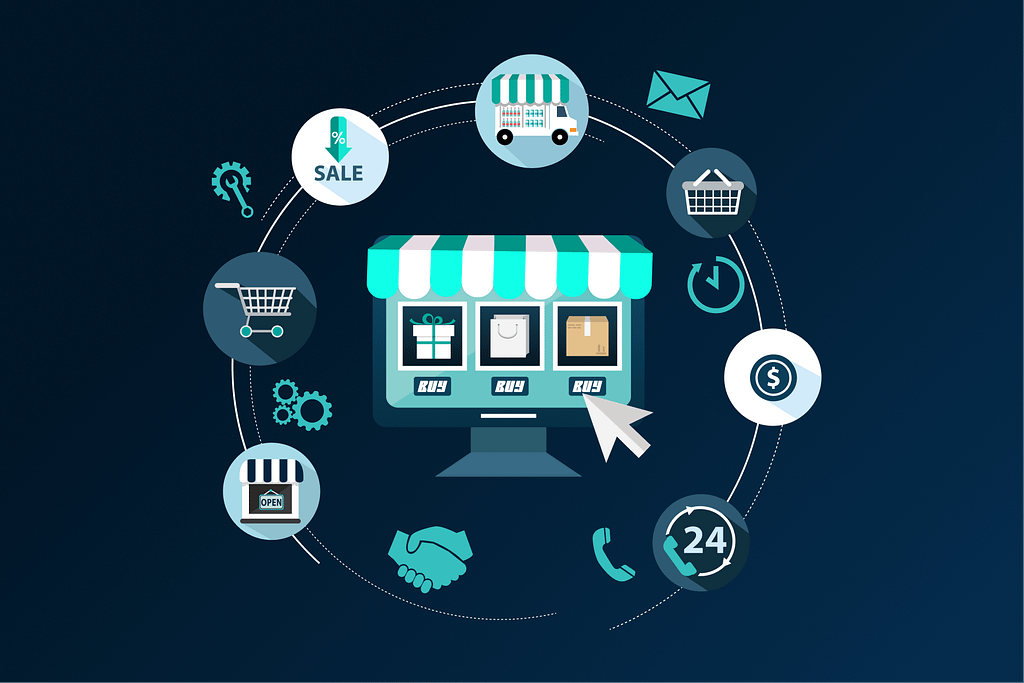
Diversifying products and services is a crucial aspect of brand evolution. For example, Apple initially focused on producing personal computers that were compact, user-friendly, and affordable. Over time, the company transitioned from solely manufacturing computers to becoming a consumer electronics giant, offering various products, including the revamped MacBook, iPod, iPhone, and iPad.
Strategies for Effective Brand Evolution
1. Conducting Brand Audits
Regular assessments of the brand’s performance, image, and standing in the market can offer valuable insights into areas that require evolution. This helps identify growth opportunities and areas for enhancement.
2. Aligning with Business Objectives
The brand’s evolution must align with the business’ overarching goals. The evolution should support the long-term vision and objectives of the business, contributing to its overall growth and success.
3. Valuing Customer Insights
Incorporating customer feedback into the evolution process is essential. Understanding what customers appreciate about your brand can inform decisions about what elements to preserve and what to innovate.
4. Revisiting Branding Strategy
Periodic updates to the branding strategy are essential. This may involve reassessing the brand’s message, visual identity, position in the market, and evolution of products to ensure they resonate with current trends and audience preferences.
5. Refreshing the Logo
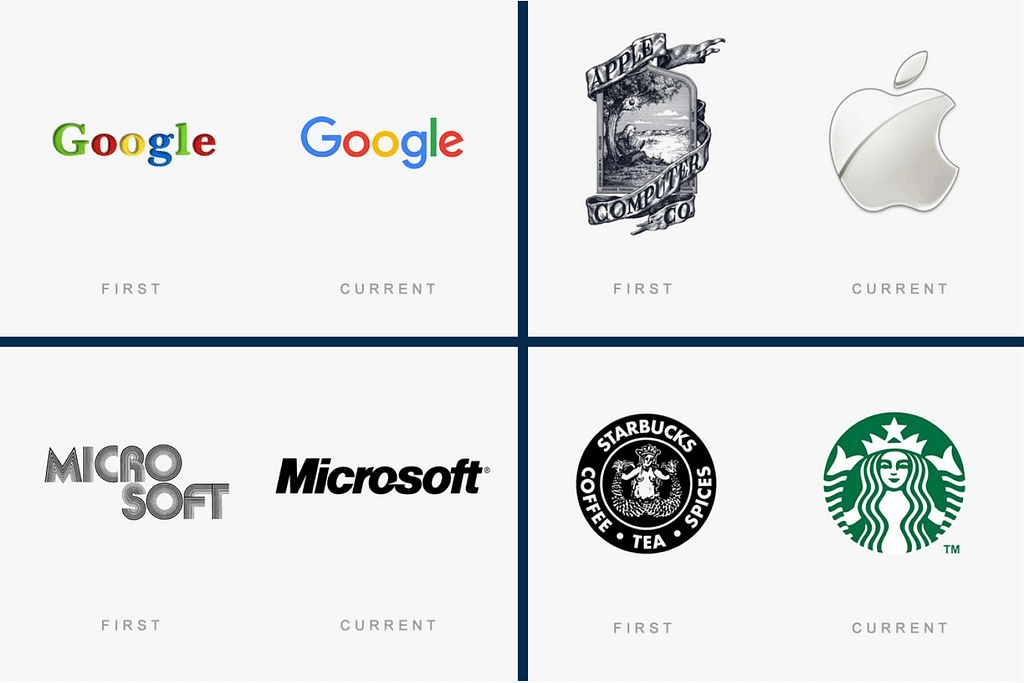
A key element of brand evolution often involves updating the logo. A refreshed logo can inject new vitality into a brand, making it more modern and relevant. This process should balance maintaining a link to the brand’s heritage with moving forward.
6. Staying Ahead of Trends
Being proactive in brand evolution involves reacting to current trends and anticipating future changes. This forward-thinking approach keeps the brand relevant and sets it apart from competitors.
7. Maintaining Brand Consistency
It’s vital to ensure consistency in branding across all platforms and touchpoints. This helps the brand remain easily recognizable and keeps the messaging coherent, whether on a website, social media, or printed materials.
8. Continuous Adaptation
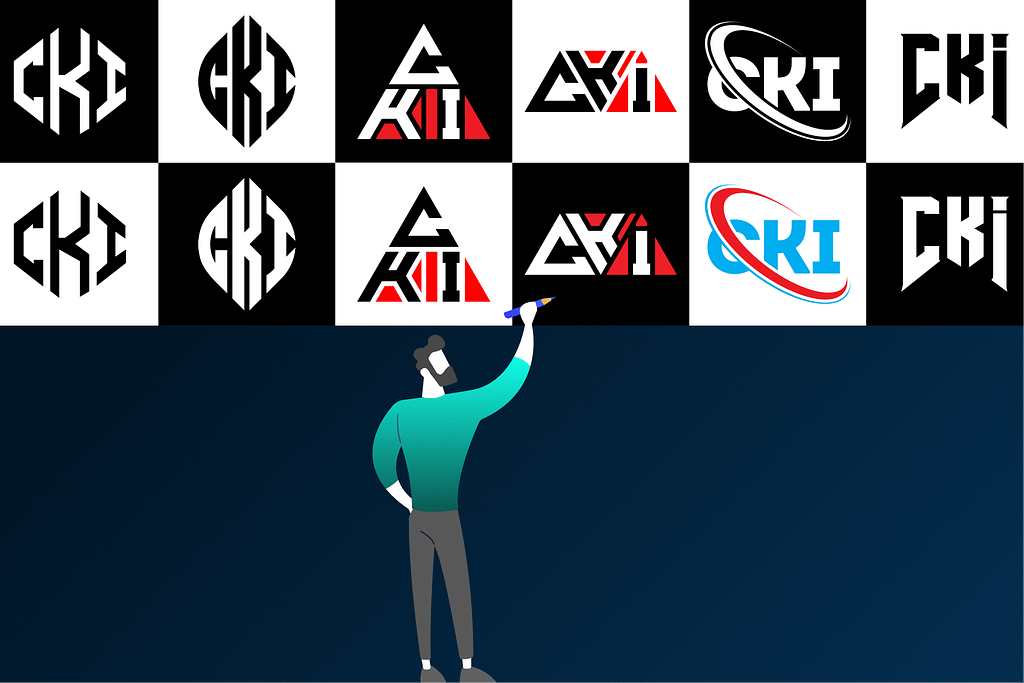
Embracing the ongoing process of brand evolution is crucial. It’s important to recognize that brand evolution is not a one-time event but a continual journey of adapting to the dynamic market and evolving customer needs.
Many business owners mistakenly believe brand evolution is solely about altering the logo or changing colors. While the following logo evolution examples might reinforce this notion, it’s crucial to understand that brand evolution involves more than just visual changes.
This journey can take various forms, from updating the visual identity to modifying the messaging to appeal to a new generation or a larger or more specific customer base. Numerous brands have updated their logos, introduced new products or services, and altered their colors or messaging to adapt to changing consumer preferences and behaviors.
Some examples of successful brand evolution strategies employed by major brands and companies are:
1. Apple’s Brand Journey
Apple is a typical example of a company that has successfully evolved its brand over time. Initially recognized as a computer company, Apple has ventured into new territories, including music players, smartphones, and smartwatches. This expansion demanded a brand evolution that kept pace with the shifting technological industry, a domain that Apple itself played a significant role in shaping.

Apple has consistently emphasized innovation, design, and simplicity throughout its brand evolution, maintaining a strong and recognizable brand identity.
2. Instagram’s Logo Redesign
A brand is more than just its logo. However, a logo redesign is often one of the initial considerations in brand evolution. It’s an effective way for evolving brands to signal subtle changes to their target audience.
Instagram is a prime example of effective logo evolution. The platform is recognized for its iconic camera logo, which has remained consistent but has seen minor modifications over the years to maintain visual appeal.
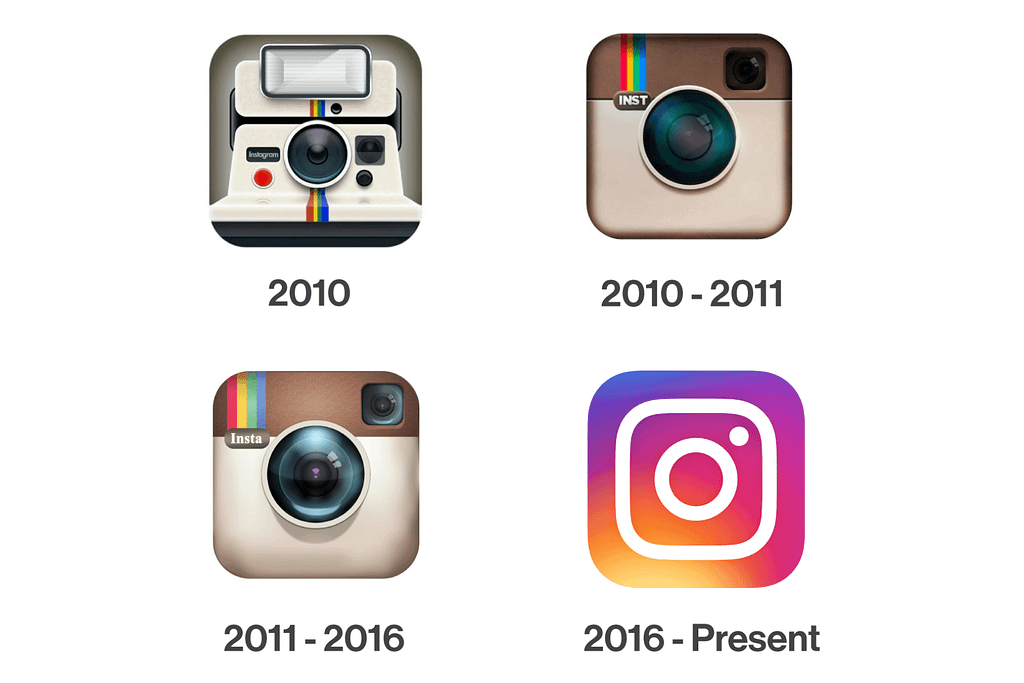
In 2016, Instagram refreshed its logo with a modern design featuring a simplified camera outline and vibrant, gradient colors. Instagram continues to uphold its brand identity and competitive positioning as a visually-focused social media platform that promotes self-expression, creativity, and community engagement.
3. Burberry’s Brand Color Change
Burberry provides another classic example of brand evolution. Initially known for its iconic check pattern, Burberry has experienced several brand color changes to meet the demands of the times and its objectives. In the early 2000s, the prevalence of counterfeit Burberry products led the British luxury fashion brand to embark on a series of brand evolution initiatives.
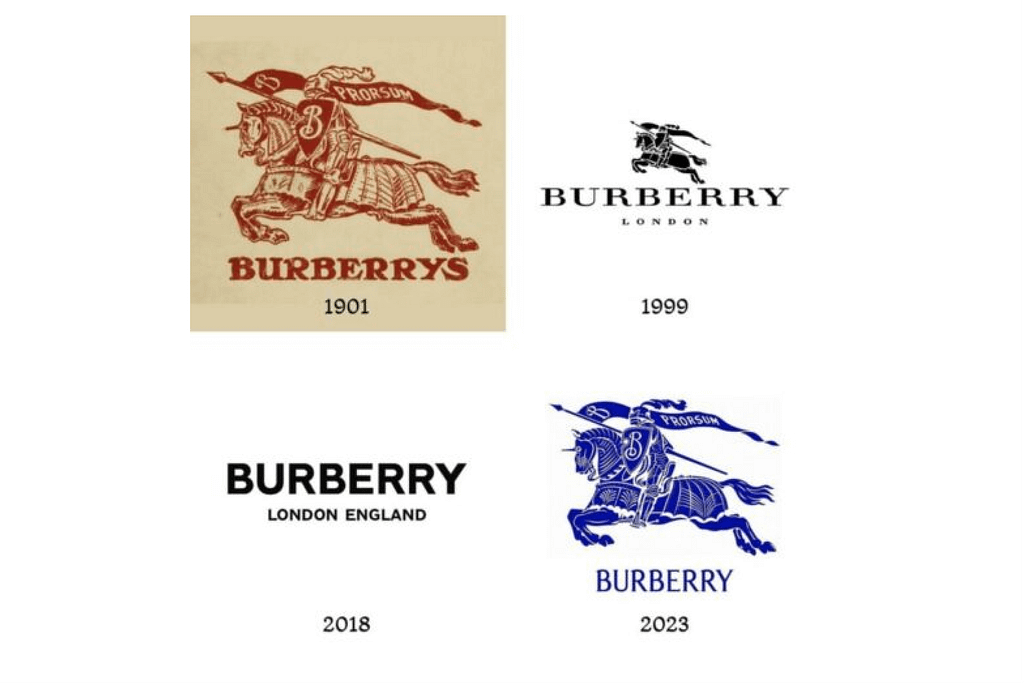
In 2018, Burberry introduced a new, modernized logo and shifted its brand colors from beige to a brighter, more vibrant blue.
4. Coca-Cola’s Adaptive Branding
Coca-Cola has continuously adapted its brand to remain relevant amid changing consumer preferences and dietary trends. 2005, the company launched Coca-Cola Zero, followed by Coca-Cola Zero Sugar in 2017, catering to health-conscious consumers. Additionally, Coca-Cola has leveraged digital marketing and social media to connect with customers and promote its brand.
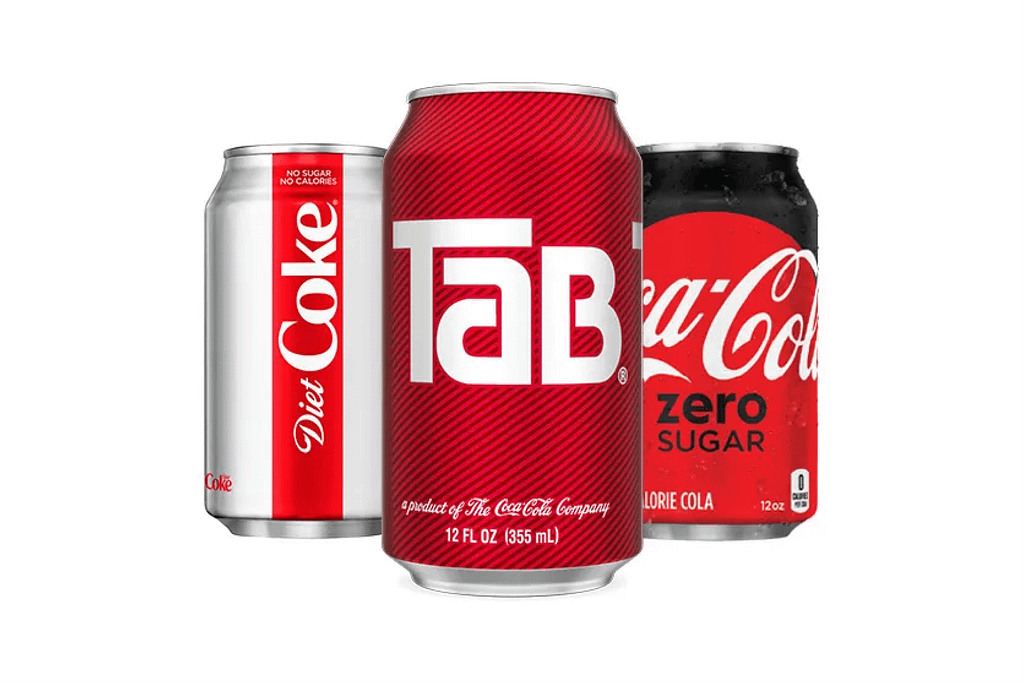
Despite these changes, Coca-Cola has preserved a consistent brand identity centered around happiness, refreshment, and positivity.
5. McDonald’s Brand Evolution
McDonald’s has undergone significant brand evolution to align with shifting food preferences and market dynamics. The company has transitioned from focusing solely on traditional fast food to incorporating healthier options such as salads, smoothies, and wraps into its menu. More recently, McDonald’s has embraced technological advancements, offering its customers mobile ordering and delivery services.
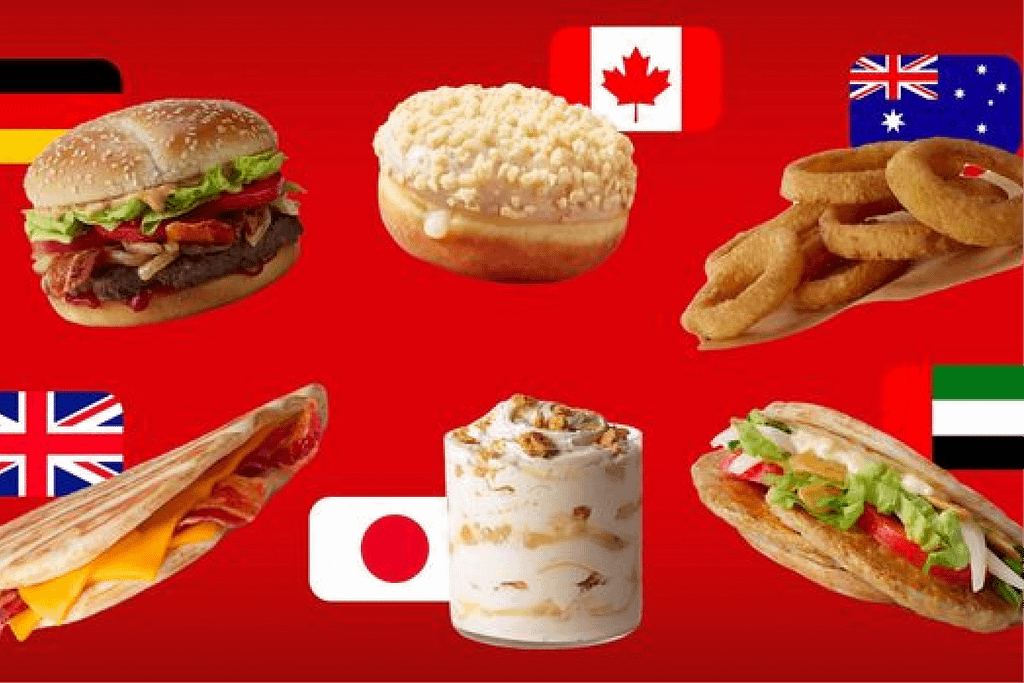
The modernization of McDonald’s brand is also reflected in the simplification of its minimalist logo, signaling a shift towards a more contemporary image.
6. Pepsi’s Logo Redesign
A logo redesign is an effective way for companies to signal a subtle transition to their audience. Unlike a complete logo redesign, businesses undergoing brand evolution can update their logo to meet brand and external expectations, often with the assistance of a logo design company.
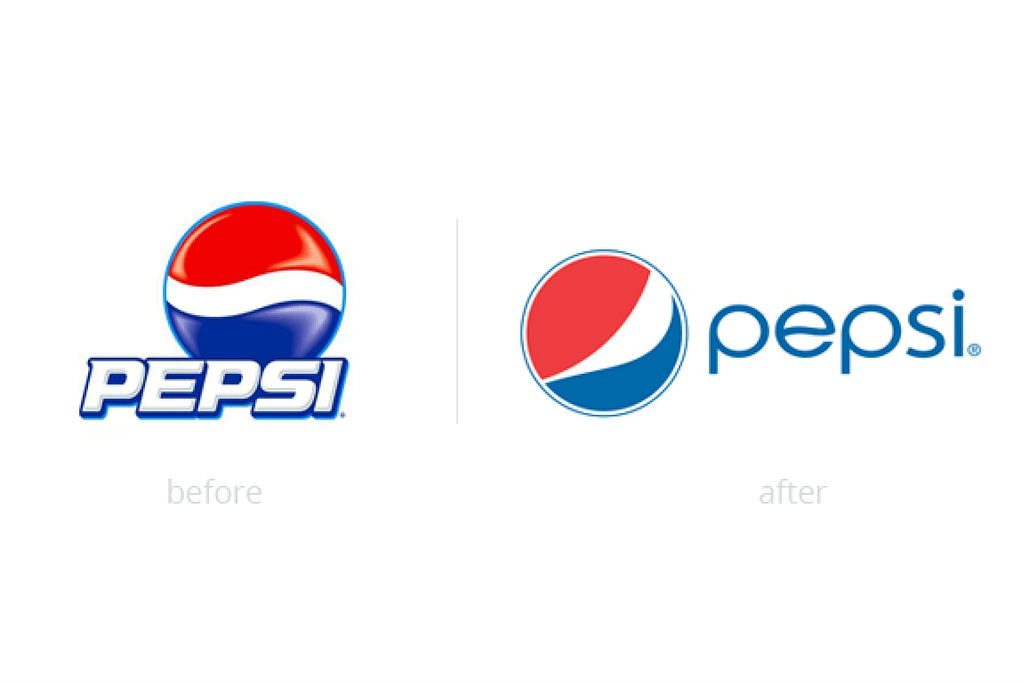
Pepsi, one of the most renowned soda brands globally, was created in 1893 and has undergone several logo changes over the years. Despite these frequent updates, Pepsi has maintained consistency since adopting the bottle cap design in 1950, preserving the same color scheme. The iconic red, blue, and white colors remain synonymous with the company.
Pepsi has successfully embraced brand evolution while preserving its core corporate identity.
7. Starbucks’ Use of Color
The Starbucks logo is one of the most recognizable company logos. When the brand was established in 1971, the founders emphasized the marine theme to complement Starbucks’ waterside location in Seattle.
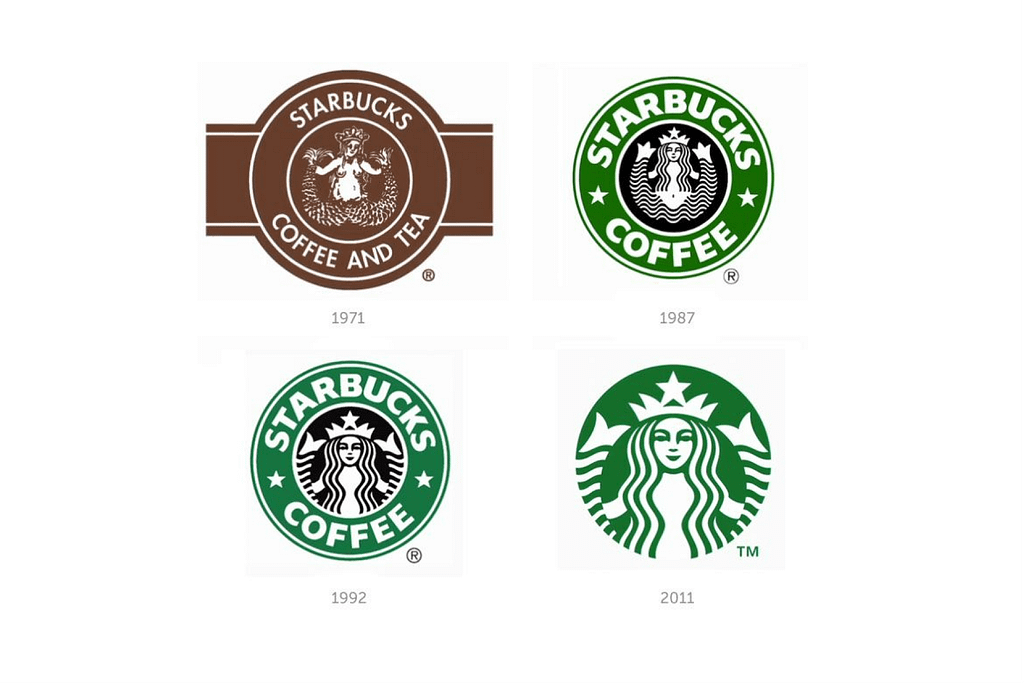
Although the sea mermaid has remained constant over the years, one significant change has been the color. In 1987, Starbucks’ logo became more stylized to reflect its growing popularity. The introduction of green was intended to align with the company’s commitment to modernity and environmental support (similar to green marketing). Compared to the old coffee-brown color scheme, adding green and white had a more calming effect on customers.
This kind of color change had a substantial impact since it allowed Starbucks to evolve beyond merely selling coffee drinks to become a global entity.
8. Vogue’s Adaptation to Trends
As the fashion landscape shifts, iconic magazines like Vogue adapt accordingly. Vogue has consistently evolved its brand to align with the changing demands of the fashion industry, public tastes, and emerging fashion trends.
The magazine’s first issue was published in 1892, focusing on high society, fashion, and culture. As the Art Deco movement gained popularity in the 1920s, Vogue aimed to meet industry standards while appealing to its international audience with the evolution of products, namely its magazines.

The magazine adopted a stylistic font and muted colors to attract consumers with a cosmopolitan sensibility, as showcased in its 1927 cover. In its April 2021 edition, Vogue displayed a striking difference in color, font, and fashion. Fashion remains central to Vogue’s branding and marketing strategy, but the concept of celebrity has also become a key element of the brand.
Despite frequent changes in fashion trends, the magazine strives to feature the best on its covers while maintaining its classic and timeless appeal.
Tips for Small Business Brand Evolution
Investing in brand evolution can be daunting for small businesses, especially if it’s their first time undertaking this journey. Here are some practical tips to guide you:
Understand Your Target Audience: Understanding the needs and preferences of your target audience is essential for effective brand evolution. Conduct thorough market research to gain insights into their interests, which will aid in tailoring your brand to meet their expectations and ensure the success of your brand evolution.
Adhere to Core Values: As your brand evolves, it’s crucial to remain loyal to your core values and mission. Any modifications or evolution of products should align with your brand’s essence and not compromise its authenticity.
Embrace Feedback: Before implementing your brand evolution, seek feedback on the proposed changes from stakeholders such as customers, employees, and industry peers. Understanding how your brand alterations might be perceived allows you to make informed adjustments based on the feedback received.
Refresh Your Online Presence: Updating your website, social media profiles, and other digital platforms is vital to reflect your evolving brand identity. Ensure consistency across all online channels to maintain a consistent message.
Advance Brand Messaging: The advancement of brand messaging involves creating and refining key messages, slogans, and narratives that showcase the distinct brand personality and positioning. This step is about articulating the brand’s unique offerings, services, positioning, and character in a compelling manner.
Launch the New Brand Identity: Once the new brand identity is ready, it’s crucial to implement it consistently across all channels, including:
- Websites
- Social media platforms
- Advertising campaigns
- Product packaging
- Other marketing avenues
It’s important to remember that brand evolution is a continuous journey requiring ongoing enhancements, assessments, and adjustments. Regularly evaluating the brand ensures it stays aligned with the company’s objectives and resonates with the intended audience.
Exercise Patience: Brand evolution is a gradual process that requires time and dedication. Maintain consistency and patience in your efforts, and you’ll be able to cultivate a strong and memorable brand identity that appeals to your audience both now and in the future.
Shifts in the Messaging
Even when a brand’s core values remain constant, tweaking its messaging can enhance communication. This approach, known as the evolution of brand management, allows businesses to stay aligned with their audience while exploring new markets.
Coca-Cola’s journey illustrates this concept well. The brand initially marketed its product as a medicinal beverage. However, its current messaging transcends the notion of merely being a soda. Today, Coca-Cola embodies happiness, suggesting that sharing a Coke is akin to sharing joy and promoting friendship.
Why Customer Engagement in Brand Evolution Matters
Brand evolution plays a crucial role in sustaining brand recognition and staying relevant to the target audience across different markets. For both existing and new customers, changes in a brand’s logo or overall identity signal ongoing growth and adaptation.

This evolution signifies a brand’s commitment to keeping pace with market trends and consumer preferences. A brand that evolves alongside its customers fosters loyalty and trust by showing that it understands and responds to their changing needs.
The continuous process of evolution is not merely about aesthetic changes; it’s about a brand reaffirming its relevance and value to its customers. It demonstrates a brand’s awareness of market shifts and its readiness to adapt, ensuring it remains consistently appealing to both longstanding and new customers.
Brand Evolution vs. Rebranding: How are they different?
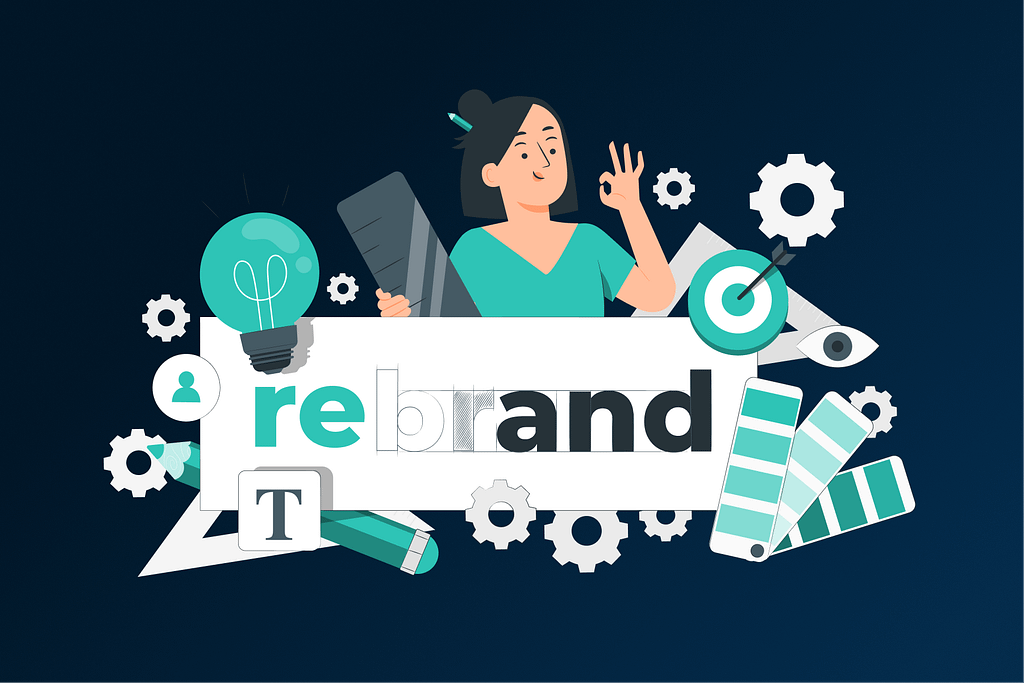
Rebranding involves significant changes in a brand’s appearance or presentation, such as a complete logo redesign, a name change, or a shift in messaging across various brand assets. This often accompanies a relaunch or a significant reveal to stakeholders or customers, signaling an impending change.
Conversely, brand evolution is suited for companies aiming to retain their core values while maintaining familiarity among consumers. This is achieved through subtle modifications, such as a slight change in the color palette, tone of voice, logo redesign, or repositioning values through a new campaign, like an awareness initiative.
Should You Consider Rebranding or Simply Evolving Your Brand
Businesses might need to consider brand evolution in several scenarios:
Competitive Landscape Changes: If competitors have updated their branding or marketing tactics, a brand might need to evolve to maintain its competitive edge.
Shifts in Consumer Preferences: If the preferences of a target audience have evolved, a brand may need to adapt to stay relevant.
Stagnation in Growth: Brands experiencing stagnant or declining growth may need to evolve to re-engage customers and stimulate growth.
Product Line Expansion: Introducing new products or entering new markets may necessitate a brand evolution to represent these changes accurately.
Technological Advancements: Disruptions in the industry due to new technologies or digital channels may require a brand to evolve to remain relevant and competitive.
Cultural Shifts: If significant cultural changes or social movements are relevant to a brand’s industry or audience, it may need to adapt to reflect these changes.
It’s crucial to conduct thorough research and involve stakeholders before embarking on a brand evolution journey to ensure it’s the right decision for the company.
Rebranding for a Brighter Future
A comprehensive rebrand can significantly impact businesses aiming to maintain their edge in the market. This process goes beyond merely updating the logo; it entails a complete overhaul of marketing materials and strategies to convey a consistent and compelling brand message across all customer touchpoints. A well-executed rebrand can revitalize a brand’s appeal, solidify its market position, and set the stage for continued growth and success with effective marketing and thoughtful design at its core.
Staying Ahead in Today’s Dynamic Market
To remain competitive and relevant, brands must adapt and evolve in response to market trends and anticipated shifts. This involves regularly updating logos and brand aesthetics to reflect the current cultural and market landscape. By staying proactive, brands can maintain their appeal to both existing and potential customers.
Collaborating with brand design specialists can be advantageous in this process. These experts can offer fresh insights and guidance, ensuring the brand’s evolution is strategic and impactful, aligning with its long-term goals and resonating with the target audience.
Companies Should Evolve Their Brands
Brand evolution is an effective strategy for businesses to adapt while staying true to their core values and vision. To successfully evolve a brand, companies can consider the following steps:
1. Reposition the brand with a fresh logo design that reflects efficiency and modernity.
2. Maintain the brand’s core values and messaging while introducing new services to meet the demands of a changing world.
3. Use color strategically to modernize the brand’s appearance and elevate its perception.
4. Stay well-informed of industry trends by adapting to the evolving preferences of your audience.
A well-executed brand evolution can be exciting, modern, and engaging, allowing businesses to retain their brand’s recognizability while meeting evolving consumer expectations.
Brand evolution is essential for businesses aiming to stay competitive and relevant in a constantly changing market. It involves more than just updating logos and color schemes; it requires a continuous evaluation and refinement of the brand to resonate better with the target audience and stand out from competitors. Embracing brand evolution as an ongoing process is key to ensuring sustained growth and success for a business.
Have you ever undertaken a brand evolution or evolution of your products for your brand? Need assistance with your branding needs? Consider connecting with our reputable creative branding agency for expert guidance.





